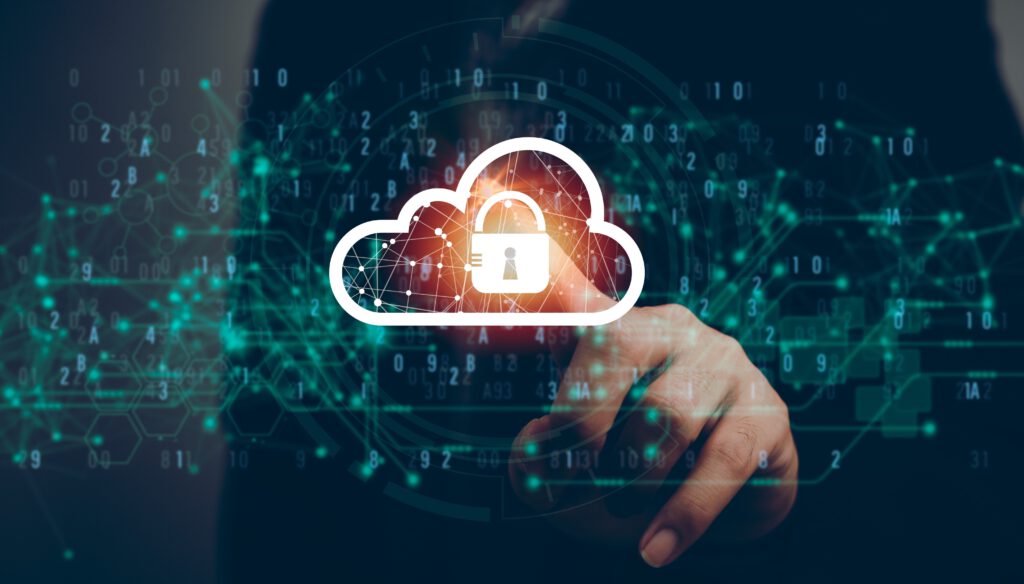As India accelerates its digital transformation, the adoption of cloud technology has become a key driver of business innovation and growth. However, this change has brought with it an urgent need to ensure a robust cybersecurity and compliance framework. Protecting sensitive data and complying with regulations is of paramount importance for organizations that want to leverage the full potential of the cloud.
Gartner predicts that by 2025, 99% of cloud security failures will be due to customer misconfigurations and poor cloud security management. These statistics highlight the need to proactively understand and address cloud-specific security risks and implement appropriate measures to effectively manage them.
Understanding the Importance of Cloud Security
Cloud security is a multifaceted field that encompasses policies, technologies, and controls designed to protect the data, applications, and infrastructure associated with cloud computing. As enterprises move to the cloud, they must keep up with an evolving cyber threat landscape.
According to a 2023 report from Cybersecurity Ventures, the global cost of cybercrime is expected to reach $10.5 trillion annually by 2025, highlighting the urgency of strong cloud security measures.
Rising cyber attacks have highlighted the need for increased cloud security in India, where the country’s burgeoning digital economy has made it a tempting target for cybercriminals. The Computer Emergency Response Team of India (CERT-In) reported more than 674,000 cybersecurity incidents in the first half of 2023 alone, highlighting the critical importance of a secure cloud environment.
Key Components of Cloud Security
Effective cloud security relies on several core components that are essential to protecting data and ensuring compliance: Identity and Access Management (IAM) is essential for controlling who has access to what resources. Implementing strong authentication mechanisms and fine-grained access controls helps organizations prevent unauthorized access to sensitive data.
Data encryption is also an important factor: Encrypting data both at rest and in transit ensures that even if data is intercepted, it cannot be deciphered by unauthorized users.
Additionally, regular security assessments and continuous monitoring are essential. Conducting vulnerability assessments and penetration tests allows companies to identify and remediate potential security gaps. Continuous monitoring provides real-time visibility into your cloud environment, enabling you to quickly detect and respond to security incidents.
Ensuring Compliance in the Cloud
Compliance in the cloud involves adhering to various regulatory frameworks and industry standards designed to protect data and ensure privacy. In India, companies must follow regulations such as the Information Technology Act, 2000, as well as industry-specific guidelines such as the RBI’s guidelines for financial institutions.
One of the major challenges is the dynamic nature of regulatory requirements. As laws evolve to address new threats, organizations need to keep up with the changes and adapt their compliance strategies accordingly. This is where automation tools play a key role. Automated compliance management solutions can track regulatory changes and streamline the process of complying with multiple frameworks.
Additionally, working with a cloud service provider (CSP) is also important. CSPs typically offer a variety of compliance certifications that can help organizations meet regulatory requirements, such as ISO 27001, SOC 2, and GDPR. Leveraging these certifications can help businesses simplify their compliance efforts and focus on their core business.
Securing the digital frontier
To effectively secure their cloud environments, organizations must adopt a multi-layered approach, which includes implementing a robust security architecture, training employees on cybersecurity best practices, and building a culture of security awareness.
First, it is important to design a security architecture that integrates various security controls, including network security, application security, and endpoint security, to ensure comprehensive protection across all layers of your cloud environment.
According to a CrowdStrike report, 36% of organizations suffered a serious cloud data breach due to misconfiguration, making it critical to adopt a holistic security architecture.
Employee training is equally important: human error remains the leading cause of data breaches, and educating employees on recognizing phishing attacks, using strong passwords, and adhering to secure data handling practices can significantly reduce this risk. A 2023 survey by Mimecast revealed that 94% of organizations in India have experienced email-based cyber attacks, highlighting the need for ongoing employee training.
Finally, fostering a culture of security awareness requires embedding cybersecurity into the ethos of the organization. This means making sure that security is seen as a shared responsibility across all departments, not just an IT issue. Regular awareness programs and mock attack drills can reinforce the importance of security and encourage proactive behavior.
Using technology to strengthen security
Technological advances are providing new avenues for strengthening cloud security. Artificial intelligence (AI) and machine learning (ML) are increasingly being used to detect and respond to threats in real time. These technologies analyze massive amounts of data to identify anomalous patterns and potential security incidents, enabling faster and more effective responses.
Additionally, Zero Trust architecture has gained traction as a robust security model. Zero Trust operates on the principle of “never trust, always verify,” requiring continuous authentication and authorization for access to resources. This approach minimizes the risk of insider threats and ensures that only authorized users have access to critical data.
Another promising technology is Secure Access Service Edge (SASE), which combines network security and wide area network capabilities to provide a unified security framework that better protects cloud environments, especially for remote and distributed workforces.
Cloud Adoption in India
As India adopts the cloud, ensuring robust cybersecurity and compliance is paramount. Understanding the key elements of cloud security, implementing an effective strategy, and making the most of advanced technologies can help businesses protect their digital assets and comply with regulations. The journey to the cloud comes with many challenges, but with the right approach, Indian organizations can protect their operations and thrive in the digital economy.
(Aayush Ghosh Choudhury, Co-founder and CEO, Scrut Automation)
(Disclaimer: The views and opinions expressed in this article are those of the author and do not necessarily reflect the views of YourStory.)

